You are not your parents or grandparents. You’re not going to work at the same company for 40 years, retire with a nice frothy pension and get a gold watch for your decades of service. In fact, you may change jobs about as frequently as I get new sneakers. For reference, that’s about every 4 years. Yes, I literally wear them into the ground. But as fashion forward as I may be, I’m not here to give style tips. Not today. Today, I’ll stay in my lane and talk about a byproduct of frequently changing jobs – the stream of retirement accounts that are left behind.
Based on research done by Capitalize, it’s estimated there are as many as 24.3 million forgotten 401k’s holding approximately $1.35 trillion in assets. They also estimate this number is increasing by 2.8 million accounts each year. [1]
But you haven’t forgotten about your old retirement accounts; you know exactly where they are! You just haven’t gotten around to doing anything about it yet. But if you’re like many people I’ve come across over the years, you’re not really paying attention to these old accounts – not sure what it’s invested in, or maybe not even sure if it’s invested at all. It’s just floating out there in the ether.
This seemingly benign oversight can prove expensive. Whether it’s because of poor investment allocation, high fees, or a combination of both, not taking a few minutes to look into your options can have a huge (say it like Donald Trump for added effect) negative impact to your long-term financial health. In fact, in the same study by Capitalize, it was estimated that individuals could be missing out on nearly $700,000 in retirement savings throughout their lives. $700,000! Unless your name is Elon, isn’t that worth closing your social media for 20-30 minutes in order to make a phone call or two?
So, let’s start with your options, for which there are really only four:
- Leave it where it is. As you might have already surmised from that 401k you still have from the company you worked at for 11 months over 10 years ago, one option is to just leave it where it’s at. If the plan has good investment options and low fees, it may be perfectly fine staying where it is. Yet, since you are no longer working for the company, you won’t be able to make any further contributions to it.
- Roll to a retirement plan with your current employer. This assumes your current employer offers a 401k or another eligible retirement plan. Not every plan allows rollovers into the plan, but most financial institutions like receiving money, so chances are this will be an option for you.
- Roll into an IRA. If your current employer doesn’t have an employer-sponsored retirement plan that you can roll into, if want a greater landscape of investment options to choose from, or if you have a financial advisor that will manage the money on your behalf, you can roll your old 401k into an IRA. A word of caution – most financial advisors are heavily incentivized to recommend this option; regardless of if it’s truly what’s best for you.
- Take the money out of your 401k. Probably don’t do this. Definitely don’t do this so you can YOLO your retirement savings on PancakeSwap cryptocurrency (yes, that is a “real” thing). Of course, there are exceptions. But if you’re under 59 1/2, in most situations you’ll pay taxes and a 10% penalty on the distribution. You started your 401k to save for retirement and you should keep it that way.
If PancakeSwap goes to the moon, this won’t age well.
In choosing which path is best for you, here are a few things to consider:
- Are you staying on top of all your accounts currently? If you have several accounts that you’ve been ignoring for years, you’ll probably benefit from some sort of consolidation. That’s all.
- Do you have any idea what you’re doing? If you don’t have the help of an advisor and if even thinking about money and investing gives you brain freeze, perhaps rolling into an IRA isn’t the best choice. 401k’s generally have a very limited menu of investment options to choose from. While some may consider this a drawback, for the novice investor, it is a good thing. Fewer choices make it easier. In addition, many 401k plans offer risk-based (Conservative, Moderate, Aggressive…) or age-based (Target Date funds) options that can help point you in the right direction, without requiring a lot of knowledge about investing. Often, there are resources available (either through online tools or through a plan representative) to help make a suitable choice.
- How do the fees compare? Fees dampen growth. And fees are not very simple or transparent, so it’s easy to ignore. Even doing this for a career, it took me some time to understand all the different layers of fees that can be in a retirement plan and how different they can be across plans. But it’s worth looking into. A $100,000 account growing at 7% for 30 years ends up with $761,226. Whereas at 6% growth (implying a 1% fee), you end up with $574,349. That’s an expensive oversight. Generally speaking, a larger 401k plan will have lower costs. So, if you moved from a mom-and-pop employer who had 10 employees to a mega-multinational corporation, chances are the new 401k will have much lower costs. Lower costs = more money for you!
- Are you retiring? I’m trying not to sound self-serving here, but honestly, it’s probably best to discuss with a financial advisor at this stage. There are too many variables to consider when retiring and it would be hard to provide any helpful direction without specific knowledge of your situation. If this represents a majority of your retirement savings, it’s worth getting a professional opinion.
- What if it’s not a 401k? I am mostly using the example of a 401k because that is a type of retirement plan most have heard of before. Yet, I’m sure many of you have other plans – 403b, Simple IRA, SEP-IRA, etc… What can be done with those? To help answer that question – I refer you to this helpful chart from the IRS.
This is certainly not an exhaustive list of considerations, but for most of you, it’s sufficient. If you’ve made the decision to save for your future, you should also make the decision to save efficiently. Don’t ignore it. It doesn’t take that much time. Instagram will still be there when you get back.
Voyageur Capital Advisors LLC is an Investment Advisor registered with the State(s) of Minnesota. All views, expressions, and opinions included in this communication are subject to change. This communication is not intended as an offer or solicitation to buy, hold or sell any financial instrument or investment advisory services. Any information provided has been obtained from sources considered reliable, but we do not guarantee the accuracy, or the completeness of, any description of securities, markets or developments mentioned. We may, from time to time, have a position in the securities mentioned and may execute transactions that may not be consistent with this communication’s conclusions.
